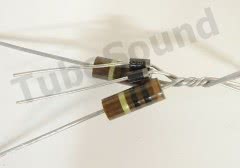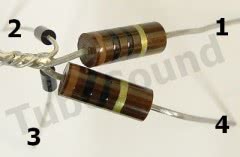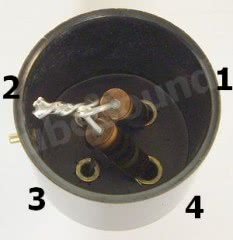I am frequently asked by B&K and Hickok owners to explain how to replace a #83 tube with a solid state version. This question is popular because #83 tubes are scare and expensive. Other benefits are increased reliability (no tube to wear down), less heat generated inside the tester case, and less load on the power transformer. So, if you want to Do-It-Yourself, I will explain how these replacements are made.
I will preface this tutorial with a few caveats: First, this procedure is easier to implement with B&K testers than Hickok testers. Hickok factored in the load that the real #83 tube has on the power transformer, and sometimes you cannot properly set the line without circuit modification. Keep this in mind if you plan to try it with your Hickok — you may be getting in over your head. Hence, substitution may be more effort than it is worth, especially when some Hickok buyers do not want the modification and would have to undo the circuit mods that were made. This leads to the second caveat: not everyone feels that the solid-state substitution works ‘excellent’ in Hickok’s. In fact, some “purists” will not even use a Hickok with a solid-state #83 replacement. They cite the fact that silicon diodes have less voltage drop than a tube rectifier, and feel that the tube test results will not be “pure.”
Personally, I always use a solid-state replacement for B&K testers. For most Hickok, I prefer to use a real #83 tube only because circuit modifications are sometimes necessary, which makes going back to a real #83 difficult for the tube tester owner or future buyer. This problem is particularly true for the “red-case” Hickok’s.
That said, I have no disapproval with using a solid-state #83 in a Hickok model that lends itself to working well, and have found that any tube “test score” differences are trivial. In my opinion, the people who argue about small test score variations are really over-thinking the purpose of testing a tube — the end-result is NOT a test score, but to ascertain whether the tube will work satisfactory in your circuit. Common sense and practicality are important.
Here it goes…
I have provided photos to make it as simple as possible.
You need two 10-ohm resistors (at least 1-watt) in addition to the 4-pin tube base and two 1N4007 diodes. The two resistors work to counteract the fact that the Hickok circuit introduces half of the filament voltage into the plate supply, but at the same time, a real #83 tube also has a slight voltage drop. Again, keep in mind that Hickok factored in the load that the real #83 tube has on the power transformer, and after using this solid-state replacement, sometimes you cannot properly set the line without circuit modification. If this is your situation, stick with a real #83 tube.

- 1. Hold upright and together all four parts: the two diodes with the banded ends facing up, and the two resistors, and twist all four leads on the topside together

- 2. Solder the twisted leads together, and spread out the remaining leads. Observe the numbers to correspond to the 4-pin tube base. (Again, the skinny pins are 2 and 3, the fatter pins are 1 and 4.)

- 3. Insert the four component leads into the tube base according to their numbers — the resistor leads go to pins 1 and 4, the diode leads go to pins 2 and 3. (The skinny pins are #2 and #3, the fatter pins are #1 and #4.) Solder connections at base pins.
The one potential pitfall of this classic design, and this is the design that is commonly sold via online auction sites, is that if the diodes short (and yes, diodes are known to short occasionally), you run a real risk of damaging or destroying your tube tester transformer. Any fuse that is on the transformer primary is unlikely to blow fast enough to protect your transformer plate voltage secondary’s winding. Designs with better protection for your transformer are available.

Need a quality solid-state #83 upgrade?
We offer a premium version of the #83 solid-state upgrade that is fused to protect your transformer. Yes, solid-state diodes are reliable but they are known to short occasionally, and you will be happy that you bought our fused #83 solid-state upgrade instead of a cheapass unfused module that can damage or destroy your transformer when its diodes short someday. I have personally seen several instances of the cheap auction-sold SS83 upgrade modules that have shorted out and damaged or ruined the tube tester transformer. It happens, but you can take steps to better protect your tester! Don’t expect a fuse on the transformer primary will adequately protect you against this problem — it will not.

Tester calibration should always be checked after making any component changes.
regards,
Bob Putnak.
eBay ID = rjputnak

